The Umbral Shroud
The Great Shadow in the West
The Umbral Shroud is an anomaly that exists far out on the westernmost edge of the known world, looming like a dark shadow far out at sea. Mankind has known of its presence going back millennia, to a time before written word, though its exact discovery is neither recorded in any work, nor told of in any tale. Instead of seeing the Umbral Shroud as something that one day appeared, many cultures religions and myths portray the Umbral Shroud, not as a wonder of the world, but as the very absence of the world all together. These groups view the Shroud as the world's edge, a place where gods stopped creating, and the universe ceases to be. A dark void lacking anything, the Umbral Shroud is thus the edge of all maps, beyond which lies only an eternal sea, cloaked in shadow.
Geography
The Umbral Shroud exists at the westernmost edge of the known world, and looms above the western oceans like a shadow swallowing in the sea. Stretching from the frigid north, to the humid south, The Umbral Shroud is a mystery that appears to have no northern, or southern ends, with its endless blackness spanning the world like a wall of shadows. Stretching eternally into a darker and darker abyss as well, no one has ever found an opposing edge to the shadow and returned east to tell of it. Though many have tried.
Sailors and explorers have for millennia journeyed out to the world's edge to try and probe into the darkness, to discover its edges and to shed light on what lies beyond. Of these adventurers not one has ever found a single answer to the mystery that is the Shroud, though many keep trying.
The Veil
Before one can actually reach the true shadow of the Shroud, they must pass into the dark realm of twilight that lies between the world of men and the world of shadows. This area is named the Veil, as its skies are perpetually obscured behind a veil of swirling shadows, which casts the lands below in an eternal twilight. These lands go on for many miles, with numerous regions and seas resting under the starry skies of the Veil. There even exist races of men in these worlds of eternal night, who live their whole lives never feeling the bright warmth of the sun across their skin. The most notable of these peoples are without a doubt, the nomadic Zanarids, who millenia ago road east out of the darkness and waged war upon the world.
Darkening the closer one gets to the true edge of the Shroud, a person can only really know they have passed between the two when the glimmers of the sun fade to blackness and the last lights of the natural world finally go out.
The Umbral Sea
THE UMBRAL SEA
The Umbral Sea
The southern waters of the west are known as the Umbral Sea, for at their western extent the ocean runs out under the dark shadows of the Shroud and into the abyss. Dark and humid, these southern waters are some of the least explored in the world, as a number of powerful currents make exploration ridiculously dangerous.
The only section of the Umbral Sea that is freely sailed by men, is out on its western edge, where wild storms rage against the curtain of the Shroud, and ravage any vessel daring to travel the violent and remote ocean. As such, very few vessels travel these dark and cruel waters, and no islands are known to exist in this lonely, cold stretch of ocean.
Of those few men who do brave the southern sea, most are whalers out of Illmere, who risk life and limb on the dangerous hunt of their titanic prey. From these whalers we get many a tale of the region's terrifying wildlife.
Inhabited by a vast number of whale species, the most formidable are without a doubt the infamous and carnivorous leopan whales. More aggressive than any other breed, leopan whales often trail behind small whaling ships, in hopes of stealing their kills, though, they are well known for also going after any whalers unlucky enough to fall overboard during a storm.
Kraken are known to roam these warm waters as well, and are rumored to come up to the surface on the few occasions where the seas are calm. Violent and predatory, kraken often aggressively seek out ships which they latch onto with their tentacles to haul beneath the waves.
The Twilight Drift
THE TWILIGHT DRIFT
The Twilight Drift
Strong enough to take hold of a vessel, it is not unheard of for the Umbral Sea’s currents to seize ships and drag them westwards, towards the darkness. These currents, are often known as the Twilight Drift, as the Veil looms ever above the waters of the Umbral Sea, and for those caught in the Drift’s course, there is often no return to the lands of daylight.
Bound for the for the exotic ports of Zanzilore, ships traveling these dangerous waters must stay close to the coast if they hope to survive the Drift’s pull. The open sea is for this reason avoided like the plague by passing crews, who rightfully avoid the stretch of water between Bourant and Zanzilore if at all possible.
There is one route of escape available to ships, if they seize it before the Drift picks up beyond the Isle of Phir, and that is to break for the center of the Umbral Sea, where a windless gyre sits calm and eternal. Becalming them, this course is only really viable to oared ships, which can make the long voyage north to retry their luck on the Drift.
Sailing vessels who opt for this measure, fair far less well, as unable to move they become stranded out on the dark blue waters of the Umbral Sea. The crews of these ships often survive only by the skin of their teeth, as they are forced to abandon their vessel, or resort to worse, when their supplies run out. Escape by rowboat is rarely easy though, as journeying south or east brings one right back into the path of the Twilight Drift. North is thus the only safe course for these adrift castaways, who will be forced to give it their all to survive the long, arduous voyage on limited supplies.
Making matters even worse are the vast number of sharks residing among the cooler central ocean waters of the Umbral Sea. Bigger than their eastern cousins, the sharks of the southwestern seas have been known to prey on men without hesitation, often going for the unlucky survivors of shipwrecks.
The Mangrove Coast
THE MANGROVE COAST
The Mangrove Coast
As previously mentioned, there exists a point of no return for ships caught up in the Twilight Drift, from which few are ever seen or heard from again, the Isle of Phir. Located on the western edge of mapped Zanzilore, the Twilight Drift is at its strongest just north of the island, making it impossible for ships to sail, or even row eastwards against the current. Where exactly this flow goes, or what lies past Phir is largely unknown to the world at large, though the coasts west of Phir are infamous among western sailors, who call the strange land, the Mangrove Coast.
Covered in hidden reefs, illusive currents, and dense mangrove swamps, the aptly named Mangrove Coast sits under the darkening cover of the Veil and is cast in an eternal twilight. What we know of the area comes entirely from the native Zanzilori of Phir, who after generations of living at the world’s edge are able to safely navigate the mangrove mazes to tell of what lies beyond.
Describing the humid darkness as a hell overrun by stinging wasp flies, colossal, violet scaled crocodiles and giant spiders that can run on water; the Zanzilori claim that no race of men has ever inhabited the Mangrove Coast, though a number of ruins can be seen from Phir looming on the western horizon. Who built these mysterious structures is unclear, as the Zanzilori of Phir refuse to even talk of them, and grow silent whenever they are brought up. Overgrown by thickets of mangrove, their foundations sit surrounded by vegetation, and are as such hidden away and submerged under the murky dark waters of the swamp.
All along the coast, hundreds of shipwrecks lay ensnared by the twisting branches of vegetation, or are aground upon hidden reefs that lay submerged just below the waterline. According to the Zanzilori these wrecks are the lingering remnants of the ships taken west by the current, who's crews deliberately scuttled their ships, rather than face the eternal darkness further west. The ultimate fate of these crews, remains a mystery, however, as none of them have ever made it back east to tell of their escape. Given the harsh Zanzilori climate and rumored wildlife, however, this is not surprising, and it is unlikely any of these castaways survived more than a week out on the Mangrove Coast.
The Unfathomed Seas
THE UNFATHOMED SEA
The Unfathomed Sea
The seas north of Blair are likely the safest route for explorers wishing to reach the Umbral Shroud, as its calm waters and relative isolation make it the safest place under the shadow of the Veil. This is not to say there are no dangers, though, as there are blisteringly cold winds that sweep south from the Sea of Invure in the far north, that can chill to the bone. Matched with a never ending crackle of thunder and lightning in the dark clouds above, and frequent bouts of rain, hail and snow, the Unfathomed Sea's only real visitors are the hardened maritime explorers of the Shroud, who recognize the stretch of sea as a pleasant voyage when compared to other routes westward.
Drawing its name from the fact that no vessel has ever successfully sounded out the bottom of this great north western ocean, the Unfathomed Sea is believed by some to be bottomless. Others argue, however, that a vast underwater trench runs across the sea floor here, descending far below the average depth of the sea floor.
While many are fearful of this idea, and worry of what sort of entities lurk in such a dark and deep domain, the Unfathomed Sea is in reality an ecological dead zone of sorts, with no apparent marine life, save for a handful of irelevant fish species.
The first of the travelers to this cold, windy sea, came over a millennia ago aboard massive wolf headed longboats that shattered the waves. Hailing from the Great Isle of Mura, the ancient mariners who braved the Unfathomed Sea, did so in search of new lands to conquer and raid; but on these voyages they could only have been disappointed with what they found. Inhabited by no races of men, and pockmarked only by a handful of small, icy isles of jagged rock, the Unfathomed Sea was a nautical wasteland.
As the ancient seafarers pushed further and further west, hoping against hope for some distant continent to appear for them to conquer, no such world materialized. Instead, the skies grew darker, and as they sailed closer and closer to the Shroud, the mariners spirit gradually began to break. Turning back at the shadowy western end of the world, the Muraviskr returned east to their kings and chieftains and told of a land where their gods gave up, deciding there that the world was already large enough.
To this day, these sea wolves, as the Muraviskr are often called, still roam the waves in search of prey, but avoid the dark western reaches of their maritime world. For this reason, explorers and adventurers frequent the cold black waters of the Unfathomed Sea, on route to the even colder ice seas of the north.
The Sea of Invure
THE SEA OF INVURE
The Sea of Invure
The Sea of Invure stretches across the world’s northern oceans, and is in truth a vast swath of freezing ice sheets, drifting and shattering, aimlessly and without cause. Utterly inhospitable to all but marine life, the polar seas of Invure have long attracted the imaginations of southern explorers who in centuries past flocked to the icy realm. It would be these adventurers who would ultimately reveal the existence of the Lalinor Sea, allowing summertime travel over Atlamb into the world’s eastern oceans.
Exploration would not be limited to the bright crystal seas of the northeast though, and at its most western reaches, the Sea of Invure extends up to and under the mantle of the Umbral Shroud. It is at these dark polar reaches of the Shroud that the shadows are at their most deadly, for hidden in their darkest recesses lurk colossal icebergs. With some towering like floating mountains, the icebergs of the Sea of Invure are more than a match for wooden sailing ships, and inexperienced crews who fall prey to these behemoths rarely survive the ordeal.
Waters here are colder than anywhere else in the world, reaching temperatures low enough to kill a man fallen overboard in less than a minute. Even when saved from the sea, men exposed to the freezing shock of the ocean’s embrace are rarely able to warm up enough to stave of death from exposure. The only luck for mariners traveling these frozen seas is that the ocean is usually steady and calm. The worst part of work aboard a vessel, is thus not keeping dry, but is instead keeping out of the wind, which carries a bite so fierce it can chill to the bone.
Legends from sailors also tell of enchanting spirits in the night skies, that beckon men further north to places so cold their ships becoming lodged in the ice. Stranded, only a small number of men have been lucky enough to survive this horrific ordeal and lived to tell of it, with most being forced to resort to cannibalism to stave of starvation.
As if bewitching lights were not enough, the Sea of Invure is also host to a whole menagerie of predatory wildlife that prey on mariners sailing through the northern waters. Like in the south, carnivorous whales with pale white skin roam the dark crystal waters of the north, attacking small ships in hopes of devouring any men unlucky enough to be knocked overboard.
Giant leopard seals are also quite common among the few rocky outcroppings of the north, with the territorial beasts having a reputation for attacking any sailors foolish enough to approach the rocky isles. Numerous legends also tell of gigantic walrus dwelling along the Lalinor Sea’s coastal cliffs; though they are not really known to inhabit the more open ice seas that extend out under the shadow of the Veil.
Small kraken are also occasionally sighted in the far north, though the cold water is thought to calm them, as attacks are rare, and they are far more timid around human vessels.
The icy waters of the far northwest are also inhabited by vast swarms of giant, aggressive shrimp-like worms that are known to leap up onto the decks of ships and thrash about at sailors with their sharp mandibles. Long and silver, the biggest are reported as reaching up to seven feet in length, and display long hairy tendrils that run down their bodies. These silverfish, as they are called, are known to be quite delicious when prepared in a meal, and are a coastal delicacy among both the Islanders of Blair, and the seafaring Muraviskr.
The Mountains of the Night
THE MOUNTAINS OF THE NIGHT
The Mountains of the Night
At the world's southern edge, pressed to the darkness of the Shroud, sit the Mountains of the Night. Dark and brooding, little is properly known of the strange rocky crags, except that they are like much of the Veil cloaked in the twilight darkness of the Shroud. Thought to border both the Twilight Steppe and the Mountains of Zanzilore, two very remote regions in it of themselves, the Mountains of the Night, are even more remote. So far from the eastern world, the Mountains of the Night are simply an enigma to civilization beyond which we no nothing of the world.
Much of the information on the region is as a result, vague, and clearly based in rumor and legend, rather than fact.
The nomadic men of the Twilight Steppe are known to dwell on the very edge of this strange rocky land, and tell to the few easterners who come to visit them, of dark needled pines covering the foothills of the shadowy mountains. A race of strange, unnamed men are rumored to live in these black forests, though very little is known about them save for their willingness to sell heavy, dark colored gemstones to the few travelers they encounter. Whether these people, or their gemstones actually even exist, has never been confirmed by a credible account, though, as the stories they are mentioned in are always second hand accounts. Told in inns, taverns and cafes across Sunar, the tales are always given by someone claiming to know of someone who's someone knew another someone, who visited the dark lands out west. For this reason, most scholars write the Mountains of the Night off as a land that very likely does exist, but is to far away for one to truly know anything concrete about it.
The Twilight Steppe
THE TWILIGHT STEPPE
The Twilight Steppe resides on the far western side of the vast Sunarian Sea, and is covered in rolling hills of dark grey grass, and shadowy pine trees. Cast under the darkness of the Veil, the Twilight Steppe is often described as a dark land, for dark people, as the inhabitants are known far and wide for their aggressive warlike nature, and unquenchable cruelty. One of these peoples are the Zanarids, who in ancient times crossed the vast Sunarian Sea, and conquered the lands of both Upper and Lower Sunar, and beyond.
The once vast empire of the Zanarids fell long ago though, and today little is known of the nomadic horse lords who remain on the midnight plains of west. Today, there exist no known sedentary communities on the steppe, with all races of men practicing either a nomadic, or tribal lifestyles catered around their mighty dark horses. Extending far into the west, the steppe is described by many as a whole world in it of itself, with its own peoples and cultures all distinct and separate from the civilizations of the far east.
Of the wildlife native to the Twilight Steppe, very little is known of what creatures prowl the dark steppe. Tales from merchants traveling the dark land, tell of haunting howls carrying down from the brooding forests. This suggests to many that wolves roam the vast land, but little more is know of such beasts if they even exist at all.
Within the Shroud
Next to none of the brave souls who enter the Umbral Shroud ever escape its dark embrace, with most drifting off into the dark never to be seen or heard from again. A lucky few do survive the ordeal though, passing into the shadows for a few hours, or days, before reappearing to the crew’s huge relief. Only two vessels are known to have ever survived more than a few days out in the Shroud though, and from the tale of one ship’s crew we know just an inkling of what lies out in the darkness of the void.
WITHIN THE SHROUD
Within the Shroud
To travel to the Shroud, one must first pass under the looming presence of the Veil. Here as already described, all light begins to fade, darkening the further west one goes. The sun first, disappears beyond the Veil’s murky haze of twisting clouds, giving off an eternal glow of twilight that paints the water in a dark blue light. Stars can be seen here, faintly resting beyond the swirling shadowed clouds above, though their light is dim, and they are barely visible, even in the dead of night. Going further into the darkness, both the sun and stars soon disappear completely, until the only light left is that of lanterns and torches. Here at last, when no natural light can be seen, one is truly within the Umbral Shroud.
Ultimately, the darkness of the Shroud becomes so pervasive that it begins to swallow up even fire light, growing in thickness until a person can see nothing, even while holding a lantern just a few feet in front of them. For this reason, determining direction ceases to be possible once enveloped by the darkness; as without stars captains and navigators are left to rely entirely upon their compasses for direction, however these too will fail them in time. Deceived by the mysterious nature of the void, compass needles are warped and pulled by the Shroud, masking true north to lure ships further and further into the darkness.
While currents are thought to exist in the Shroud there is little evidence to support the theory, and instead the few stories we have, describe the water as a horrifyingly still surface of inky blackness.
Aboard one of the two surviving ships, the Cydnus, a particularly brave oarsmen is reported in the captain's log to have tasted the dark sea water as a dare, he reported it as tasting like common sea water, however, died a few days later vomiting up a brackish, worm infested slime. His body was promptly tossed overboard, and any contact with the water was in the future, forbidden.
The wind, as well, slowly ceases to a dead calmness within the Umbral Shroud, as if dragged to a halt by the very thickness of the shadows. For this reason, any ship entering the Shroud, reliant solely on its sails, is at a high risk of becoming stranded in the dark, with no means of escape. In the case of the Cydnus, escape was only made possible by the fact it was a dromund with both oars and sails. Able to rely on its oarsmen to row them when the wind abandoned them, the crew would have no doubt starved in the darkness, like many others, had they relied solely on their sails to continue their voyage.
When traveling into the northern Shroud, these issues only grow worse, for as discussed above, icebergs the size of mountains drift aimlessly through the darkness. The Cydnus traveled these frozen seas of the far, dark north while lost in the Shroud, and the crew had several near misses with these floating behemoths towards the end of their journey. One even ran across the side of the ship in the darkness, rocking the entire vessel as its jagged ice cut through the wooden rail of the ship like butter. A few inches over and the Cydnus would have certainly sunk then and there, the story of the ship’s voyage, like so many before and after, never escaping the clutches of the Shroud. For this reason, luck alone allowed the crew to press on, and luck alone allowed the captain to record the appearance of the ice; which he described as yellow and sickly in color. Smelling of sulphur, the captain felt ill holding the freezing cold shard in his gloved hand, but saw black veins running under its surface in the lantern light.
FAUNA
Fauna of the Umbral Shroud
During the long dark voyage of the Cydnus, a pair of men fell overboard, or as one claimed, were hauled overboard by something unknown. While one man was luckily saved, the other was never seen again after submerging. This report in the captain's log does not go into much detail, unfortunately, with the man no doubt being quite unsettled by strange disappearance. Stories from the crew do still exist, however, and tell of how the victim was always a good swimmer, and should have easily been able to hold himself above water until he could have been rescued. This solidifies the survivors story in most men’s eyes that strange monsters lurk in the darkness, making the Shroud all the more disturbing of place.
The Umbral Shroud is to the unperceptive eye, devoid of all life, with its inky black waters existing only as a void that swallows anything unlucky enough to fall into its endless fathoms. From some of the more sharp and experienced survivors of this dark hell though, we get a very different picture.
Reports of pale shapes drifting through the shadows are alarmingly common among vessels passing along the edge of the Shroud, though few reports are ever quite identical. Some sailors tell of creatures long and white like squid, which stretch the length of a ship and drift silently alongside it until spotted, at which point they sink into the darkness. Other, older tales, describe colossal masses of pale fat and mucus, with large sorrowful eyes that stare hauntingly at men unlucky enough to fall under their gaze. Wide, but disgustingly flat, these horrific abominations drift like mats atop the sea and wrap around ships, forcing oarsmen to literally row through them to escape.
Most frequently described, however, are the fish, if they can even be called that. Long, pale and greasy, without eyes or mouths they dart through the darkness in uncountable swarms. Averaging only about a half foot in length, their bodies display no bones, and aboard the Cydnus a physician even conducted a dissection, revealing their innards to be made entirely of foul smelling pulp and slime. They are not dangerous, however, at least as far as reports indicate.
Gigantic spiny shelled whales and crustaceans are also well chronicled in the region, with sightings occurring even in the western reaches of the Veil where an inkling of light reveals their terrifying presence. Not directly hostile to men or ships, these strange alien creatures often avoid vessels, but can be seen gliding through the waves as their gigantic spines crest the waterline.
Despite efforts by whalers to attack and do battle with the giants, there exist no reports of them ever actually piercing the thick armored shell of the creatures. Most fights usually end with the creatures sinking back into the dark hell from which they came, but some have been known to ram and savage whaling vessels with their spines, using them to batter and impale any whaler unlucky enough to fall overboard in the chaos.
From the reports of the Cydnus we know vaguely today of other entities, or threats, dwelling out in the darkness, which they in some cases only narrowly avoided falling prey to. One report, tells of a pair of sailors who fell overboard, or as one of them claimed, were hauled overboard by something unknown. While one of the men was luckily saved, the other was never seen again after submerging. This report in the captain's log does not go into much detail, unfortunately, with the captain no doubt being quite unsettled by strange disappearance of his men. Stories passed down from the crew do still exist of this event, however, and tell of how the lost sailor was always a good swimmer, and should have easily been able to hold himself above water until he could have been rescued. Other stories from the Cydnus report of strange sounds whispering out across the dark waters. Inhuman in nature, the noises were described by the captain, in his log, as being almost attractive to the ear, as if they were beckoning to the wayward crew to halt in their voyage. Refusing to stop though the Cydnus pressed on, and soon put the worrying sound behind them as the silence of the Umbral Shroud once more descended upon their journey. Numerous sea tales also tell of titans lumbering in the darkness. Never showing themselves, these giants make their presence known by the the waves that they give off, and the breathing sounds that they make, moving through the shadows on some unknown journey. At other times, sailors tell of roars and screams emanating across the water, warning of some distant battle between gigantic sea monsters fighting in the blackness. Beyond these there exist a thousand other tales told of the Umbral Shroud, painting it as a realm of horror and shadow, inhabited by creatures and threats found nowhere else in the world of men.
From the reports of the Cydnus we know vaguely today of other entities, or threats, dwelling out in the darkness, which they in some cases only narrowly avoided falling prey to. One report, tells of a pair of sailors who fell overboard, or as one of them claimed, were hauled overboard by something unknown. While one of the men was luckily saved, the other was never seen again after submerging. This report in the captain's log does not go into much detail, unfortunately, with the captain no doubt being quite unsettled by strange disappearance of his men. Stories passed down from the crew do still exist of this event, however, and tell of how the lost sailor was always a good swimmer, and should have easily been able to hold himself above water until he could have been rescued. Other stories from the Cydnus report of strange sounds whispering out across the dark waters. Inhuman in nature, the noises were described by the captain, in his log, as being almost attractive to the ear, as if they were beckoning to the wayward crew to halt in their voyage. Refusing to stop though the Cydnus pressed on, and soon put the worrying sound behind them as the silence of the Umbral Shroud once more descended upon their journey. Numerous sea tales also tell of titans lumbering in the darkness. Never showing themselves, these giants make their presence known by the the waves that they give off, and the breathing sounds that they make, moving through the shadows on some unknown journey. At other times, sailors tell of roars and screams emanating across the water, warning of some distant battle between gigantic sea monsters fighting in the blackness. Beyond these there exist a thousand other tales told of the Umbral Shroud, painting it as a realm of horror and shadow, inhabited by creatures and threats found nowhere else in the world of men.
The Shadowed Wastes
THE SHADOWED WASTES
Beyond the Twilight Steppe very little is known of the world. There is one place, though, spoken of by the Zanarids in hushed whispers, a place where the Umbral Shroud descends on land, blanketing the world in darkness, Suqdrin Nazadal. Translated from their harsh, guttural tongue, this name loosely means the Shadowed Wastes, the name it is known by to the few easterners who are aware of its existence.
Known only through ancient rumors and legends dating back to the Zanarid Kazatar, no one born east of the Sunarian Sea, alive today, can credibly claim to have visited the Shadowed Wastes. This is because the Shadowed Wastes exist in the farthest corner of the west, beyond insurmountable dangers and years of arduous travel through some of the harshest terrain imaginable. It is furthermore, the furthest west a person could ever hope to go, as its very air is toxic to humans and fills the lungs with chocking, black slime. As a result, it is (when it is even included at all) the absolute farthest west any map can go, for beyond it is nothing but the void and abyss.
The Shadowed Wastes, are according to old tales from the Zanarids, a lifeless land where no plants, men or animals can live. Dark as the abyss, its sunless skies loom low to the ground, with visibility degrading drastically the further west one travels. Furthermore, an ominous hum apparently emanates across the land, though its origin was a mystery to the Zanarids who wisely gave the harsh land a wide, wide birth. One of the only other noteworthy things said to exist out in the darkness are a number of strange bluish green pools. Giving off a foreboding glow, the purpose, nature and origin of these strange pools is another mystery of the Shroud, that men may never truly discover the answer too.
The Voyage of the CydnusVenturing further into the darkness than any other ship, the Cydnus is realistically the best source on the Umbral Shroud, as its story is without a doubt the most recent, occurring only about a century ago. Its sister surviving vessel, an unnamed Sunarian galley, predates it by over a thousand years occurring during the reign of Asq I of the First Sunarian Empire. Because of this many doubt if the Sunarian galley story ever even existed, though its reports of a dark realm of shadow in the west, are known to have been accurate. Hailing from Illmere, the Cydnus was never meant to brave the Umbral Shroud, but was forced to none the less when it was swept off course in a gale and was forced into the Shadow. Spending over three and a half months lost in the darkness, the Cydnus was a dromund, which meant it maintained both oars and sails for propulsion. This fact, tied in with blind luck ultimately won the crew their survival, as the wind left them after they entered the Umbral Shroud, stranding them alone in the dark. Able to rely on their oarsmen though, the ship was successfully able to continue its journey, going on to eventually escape the darkness and make it back to Illmere. Today the voyage of the Cydnus is renowned across the western world, and exists as a maritime legend, told in every port and harbor from Sunar to Aulmoira.
The Cydnus, emerging from beneath the Umbral Shroud
Alternative Name(s)
The Shroud, The Shadow, The Great Darkness
Type
Void
Communities
Wyspar Island
The last vestige of civilization before the Shroud is the dark and windy crag of Wyspar Island. Situated on the northwestern edge of the Umbral Sea, Wyspar Island was originally an uninhabited rock far out alone in the sea, and today has no permanent residents, though it is inhabited all year round by whalers and sailors who use it as a rest stop to wait out storms.
Wyspar Island is owned by no kingdom or empire, for it holds no natural resources save for the bounty of the sea. Useful only as a safe harbor for ships to wait out a storm and resupply, it is the last port of call before the darkness, where crews can get a hot meal, or rest their legs on solid ground. Wyspar's harbor is not entirely safe though.
Located on the northern edge of the Umbral Sea's storm path, large storms are known to savage the small rocky isle, destroying moored ships against the docks. Despite this, its far better than being on the open sea during such a storm. There are also legends of a colossal rogue wave sweeping away the entire community in the distant past. Told by the local whalers and sailors every time a storm hits, the story is often disbelieved by mainlanders who have yet to experience the wrath of the southern seas. For the men who have braved them though, the legend is a very real possibility, as they know it wouldn't take much for all of Wyspar to be submerged under the rolling thunder of the Umbral Sea.
Remove these ads. Join the Worldbuilders Guild

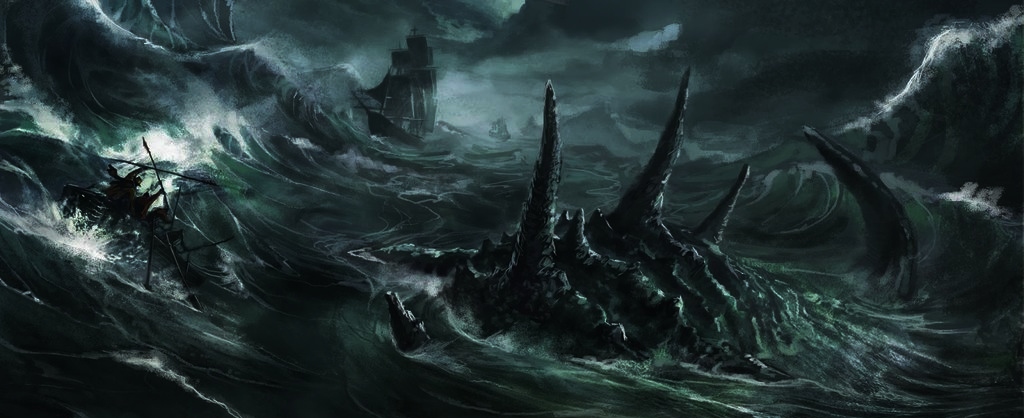
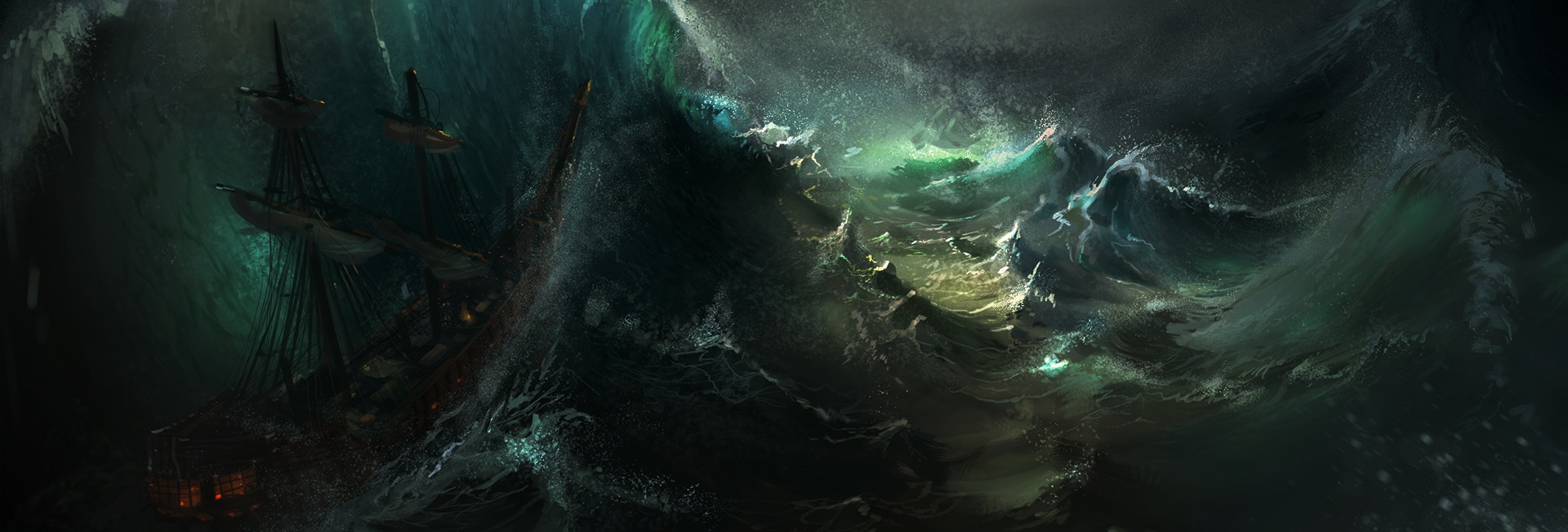


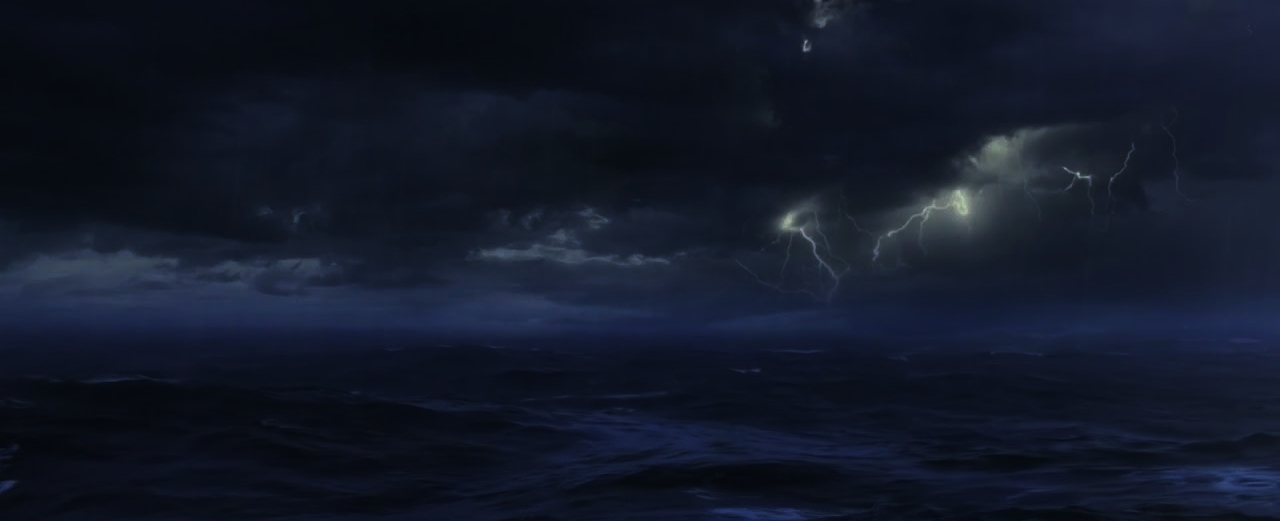

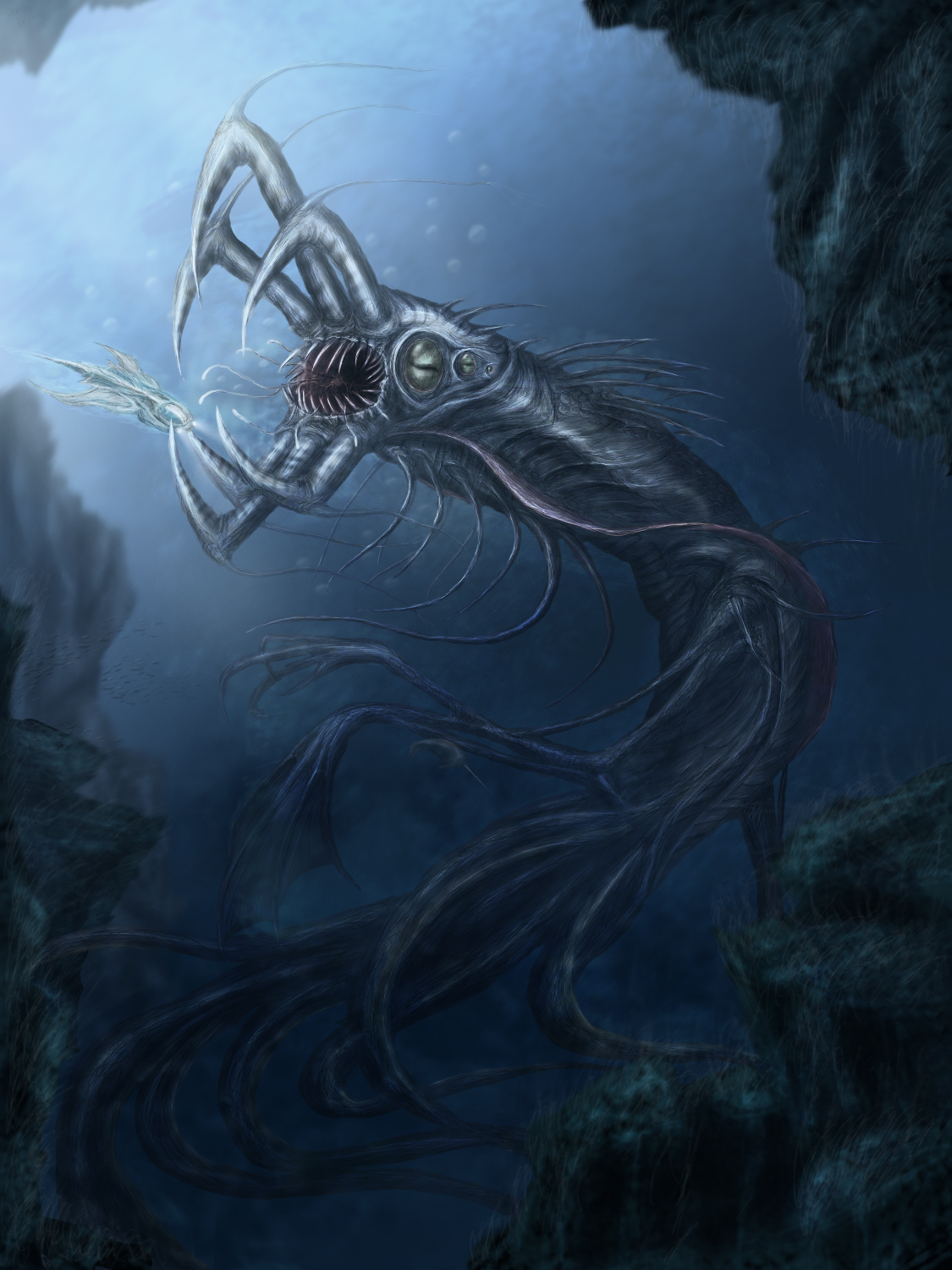


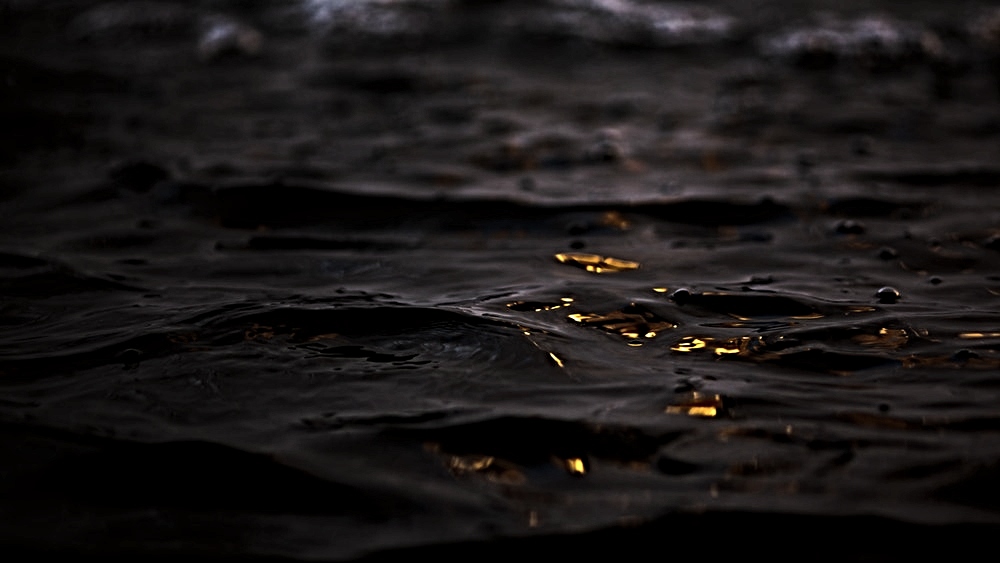
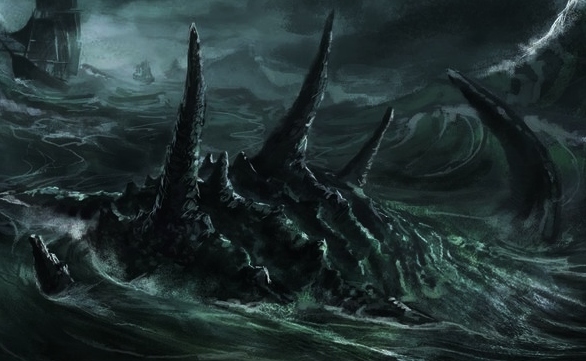
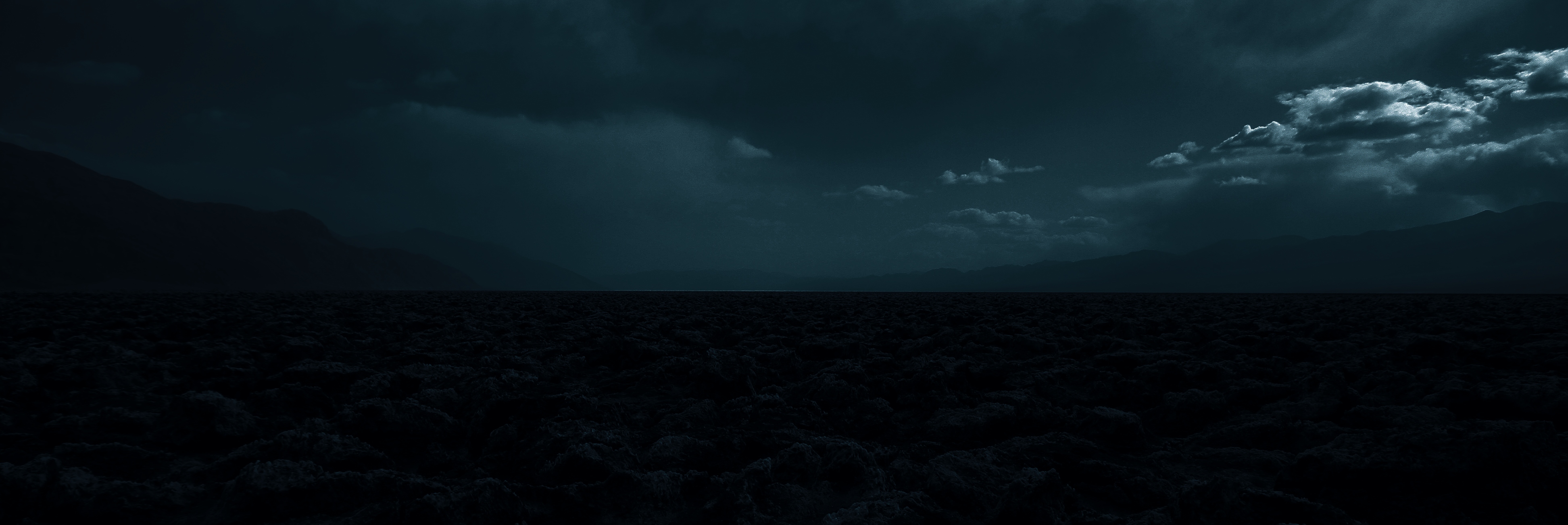
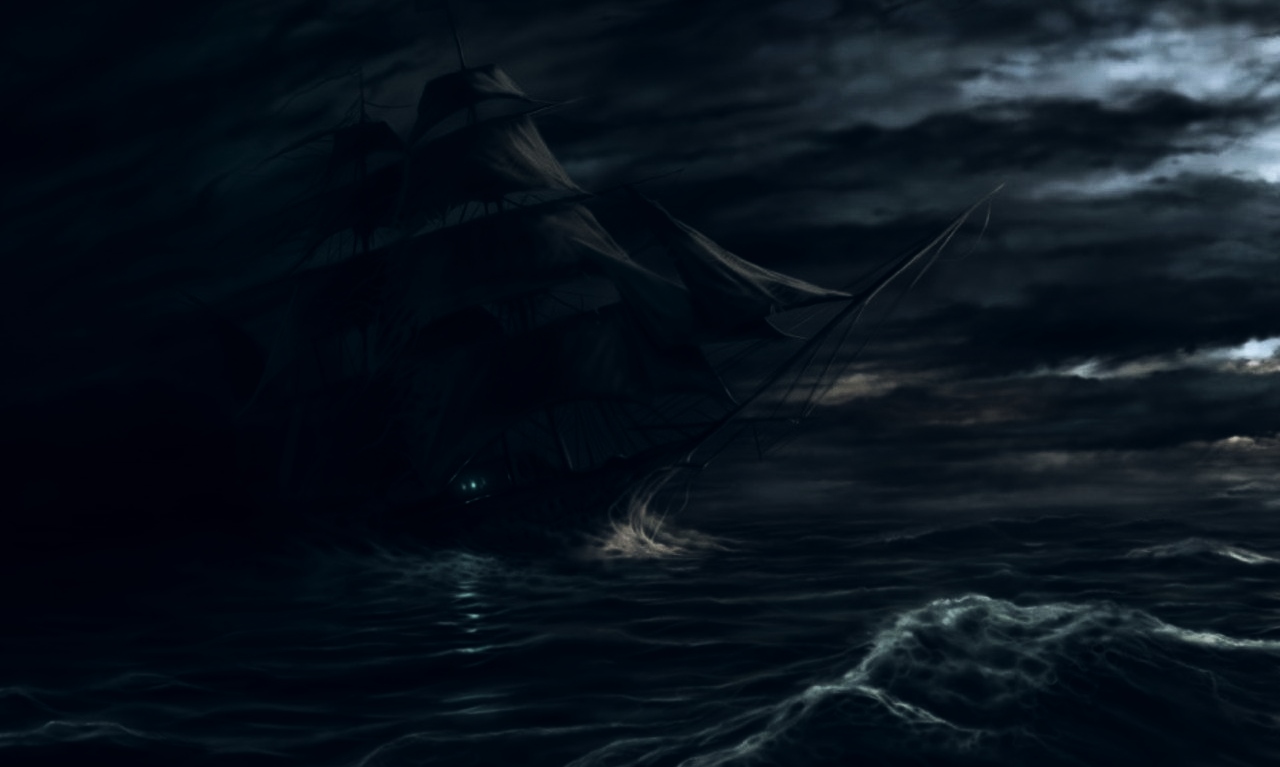
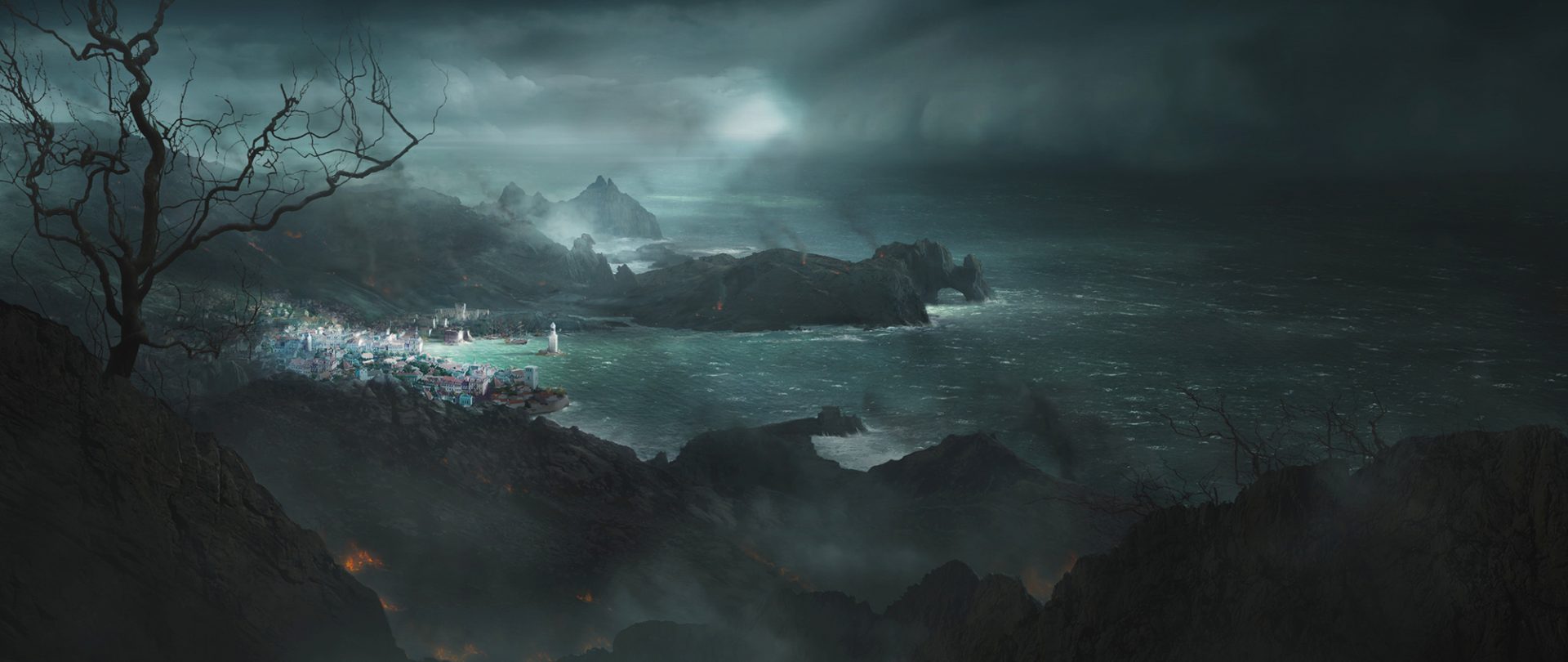







Honestly I just love this article. The amount of detail and work you put into the article is amazing and it definitely portrays the mystery and unknown horrors of the umbral shroud. Overall a great article